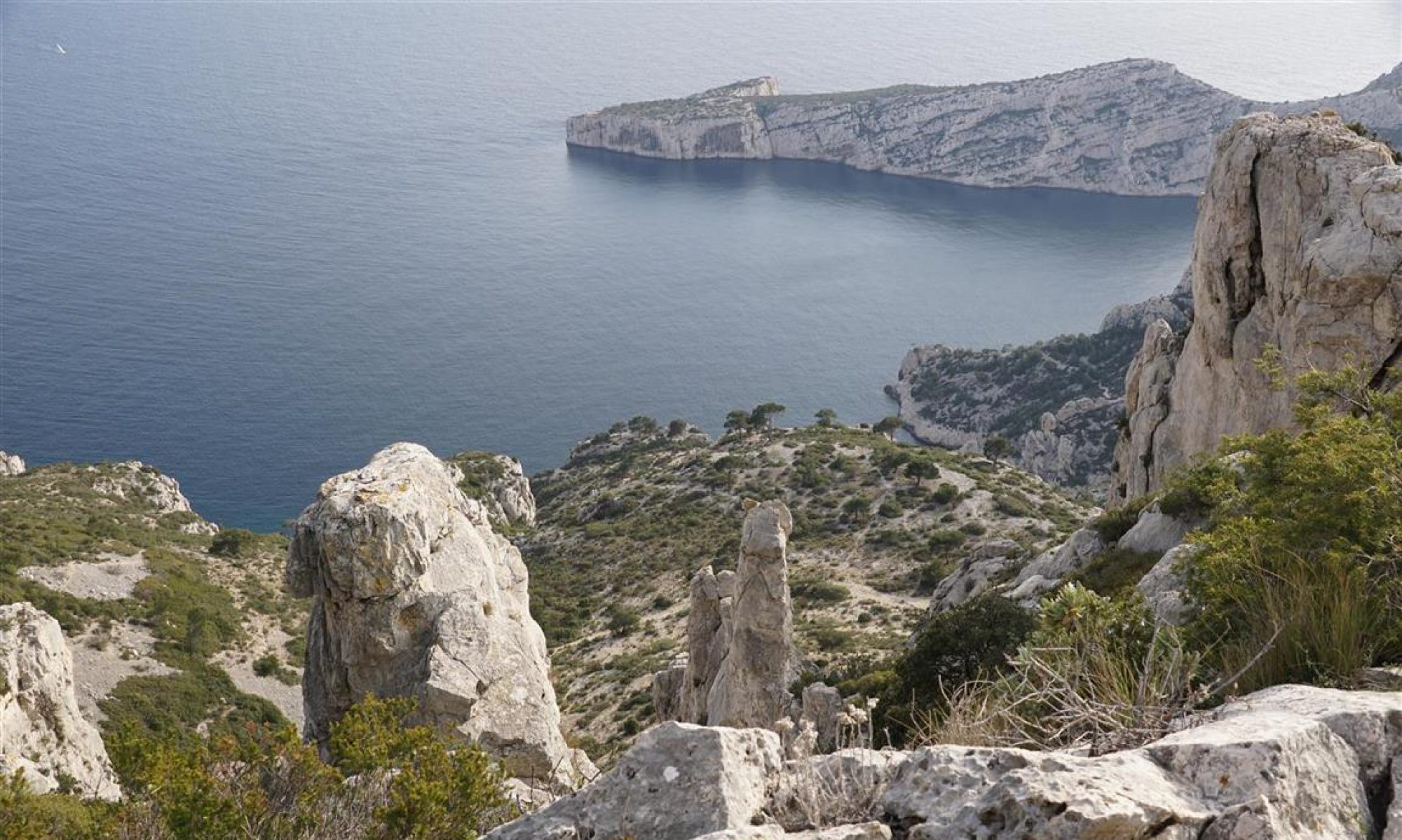In the Mediterranean region of France, several bridges are known as a “devil’s bridge”. Building a bridge in the Middle Ages was not easy and presumably subject to collapse during construction. To complete a bridge, as the legend goes, a builder would make a pact with the devil. Under the arrangement, the devil would allow the bridge to be completed and would get the first soul to cross the bridge as a reward. There’s more to this legend, that the reader can look up.
But in Corconne it’s not a devil’s bridge and it’s not man-made but rather a natural stone arch at the far end of a valley framed by imposing cliffs. There is no shortage of devil’s bridges in this area but there is also no lack of natural stone arches (e.g. the Pont d’Arc in the Ardèche spanning the Ardèche river, the ravin des Arcs in the Hérault department with at least 2 stone arches across a river bed). However, the “pont du Hasard” in Corconne is the only one I know of that doesn’t span a river.
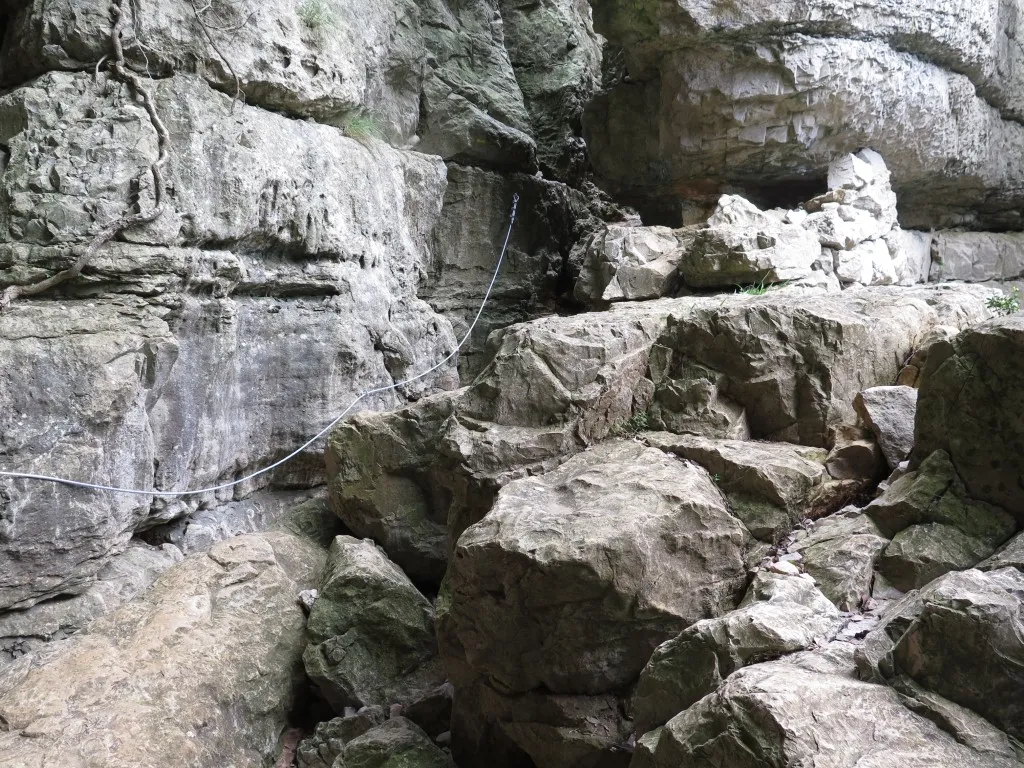
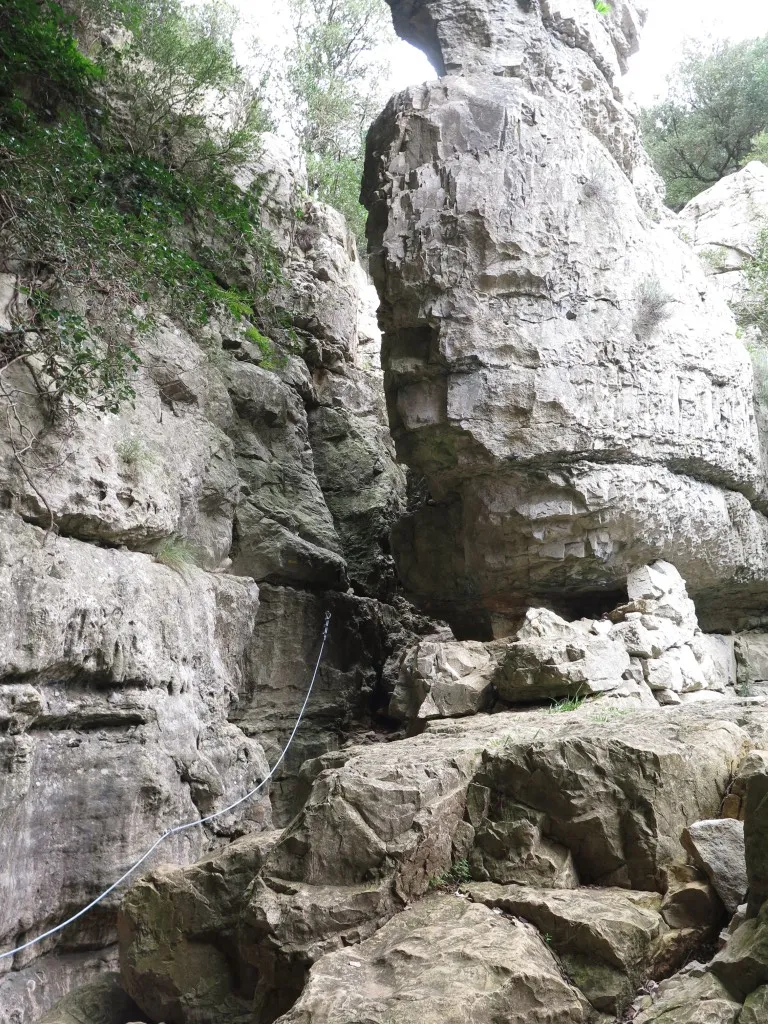
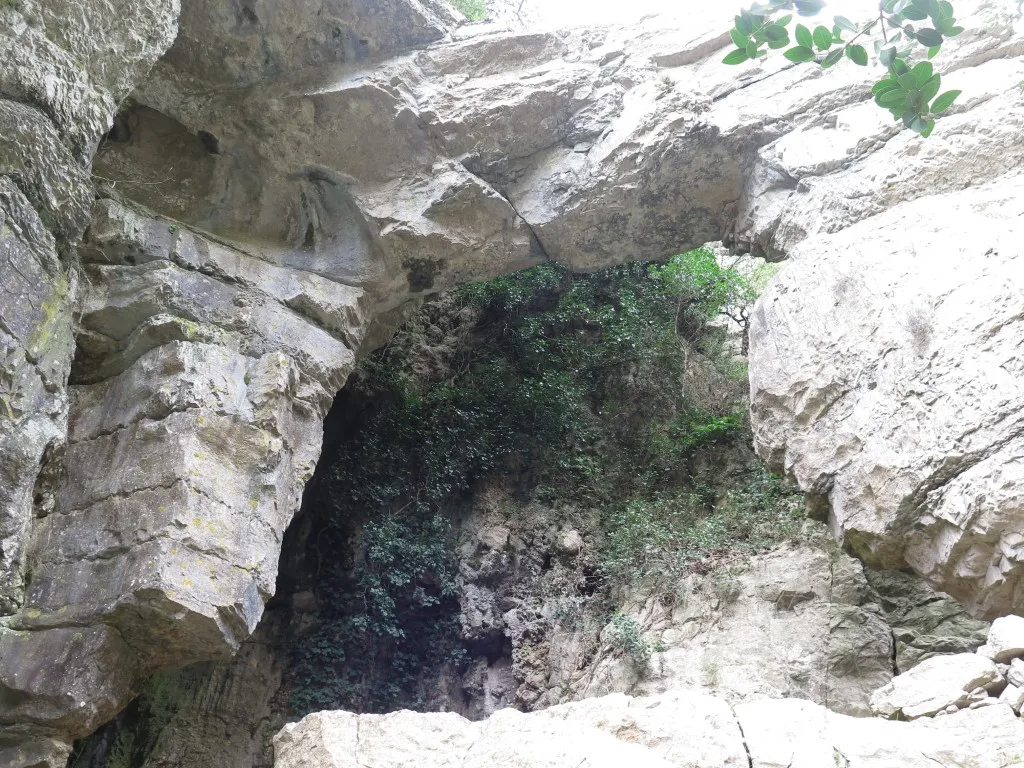
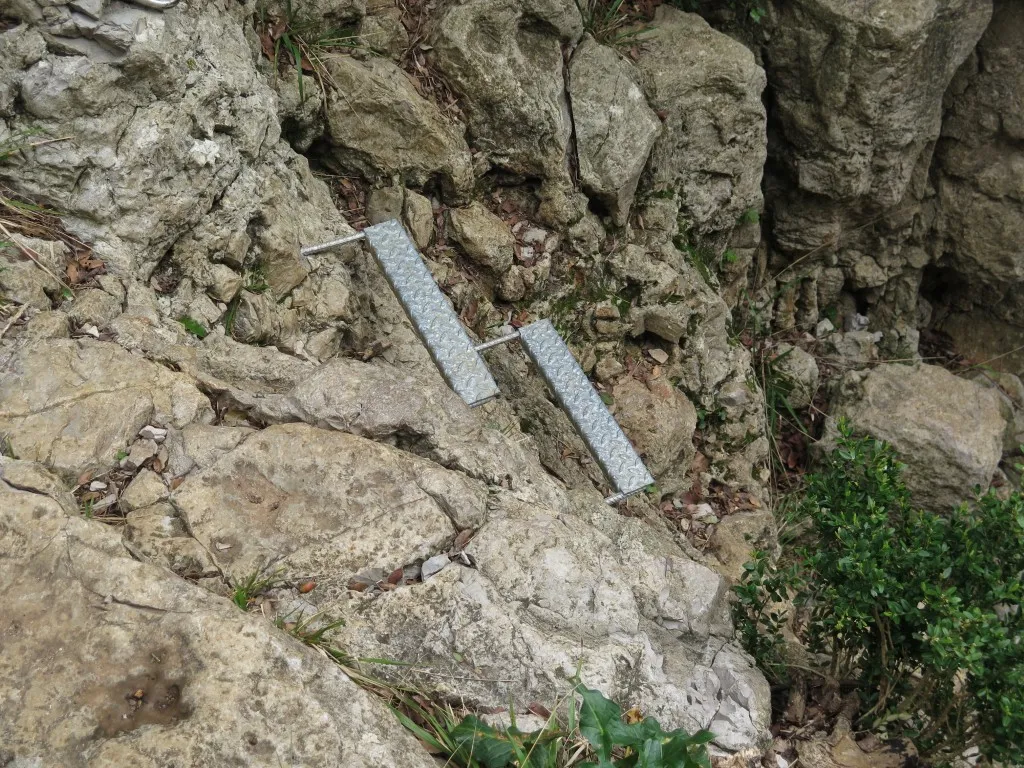
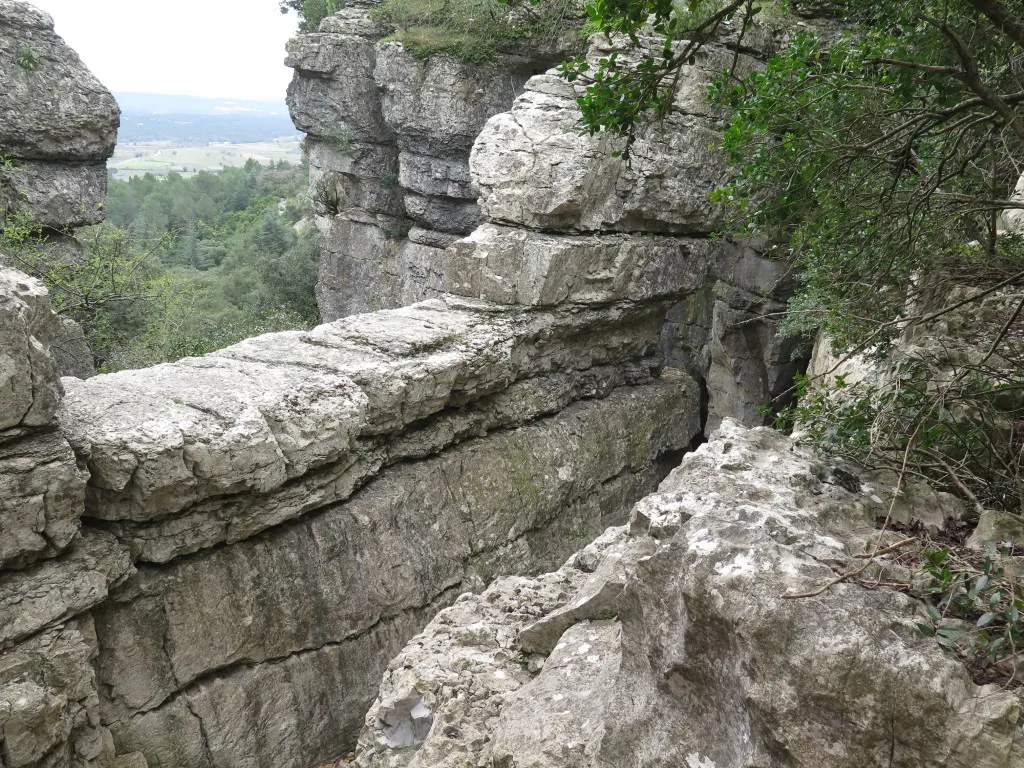
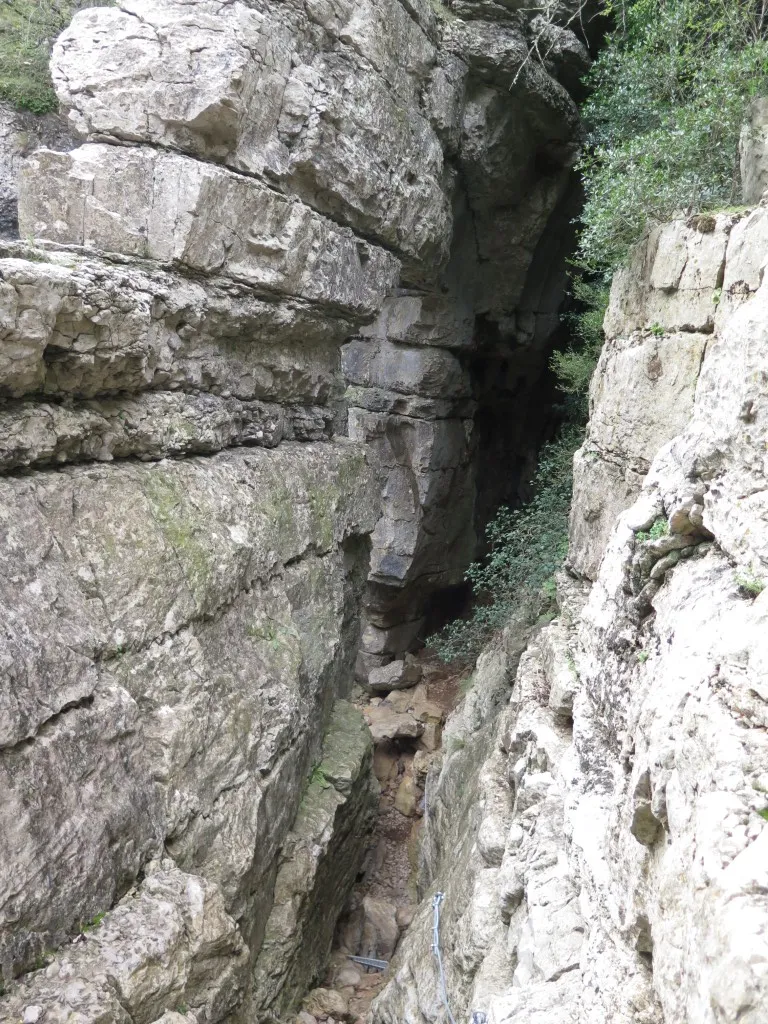
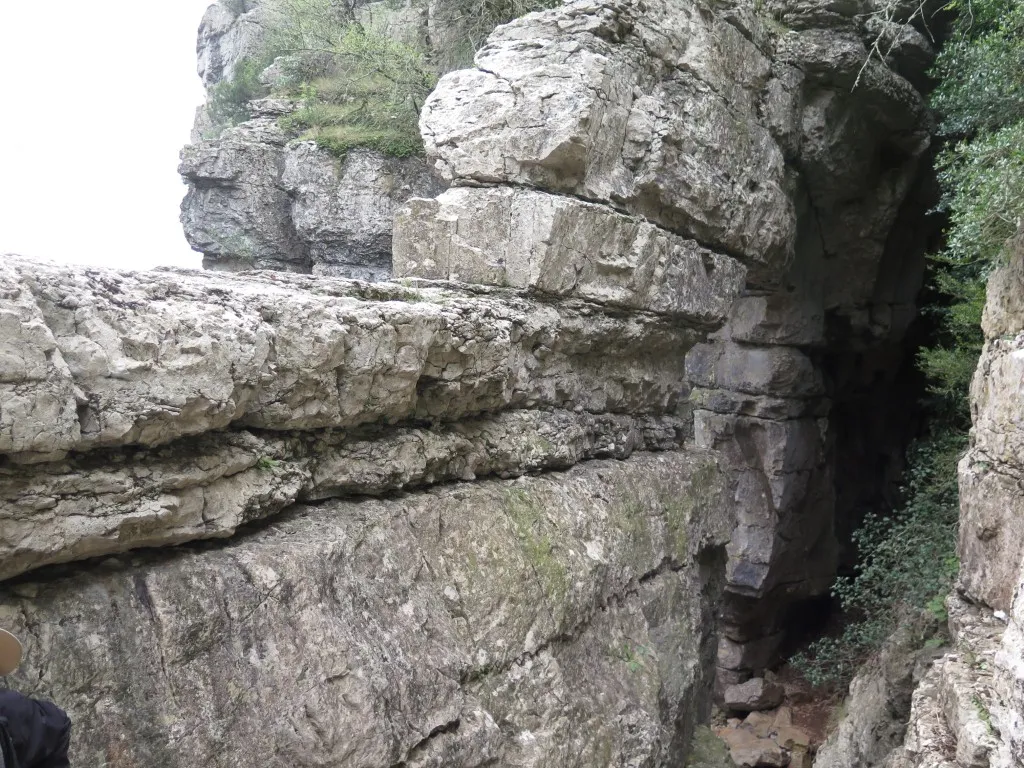
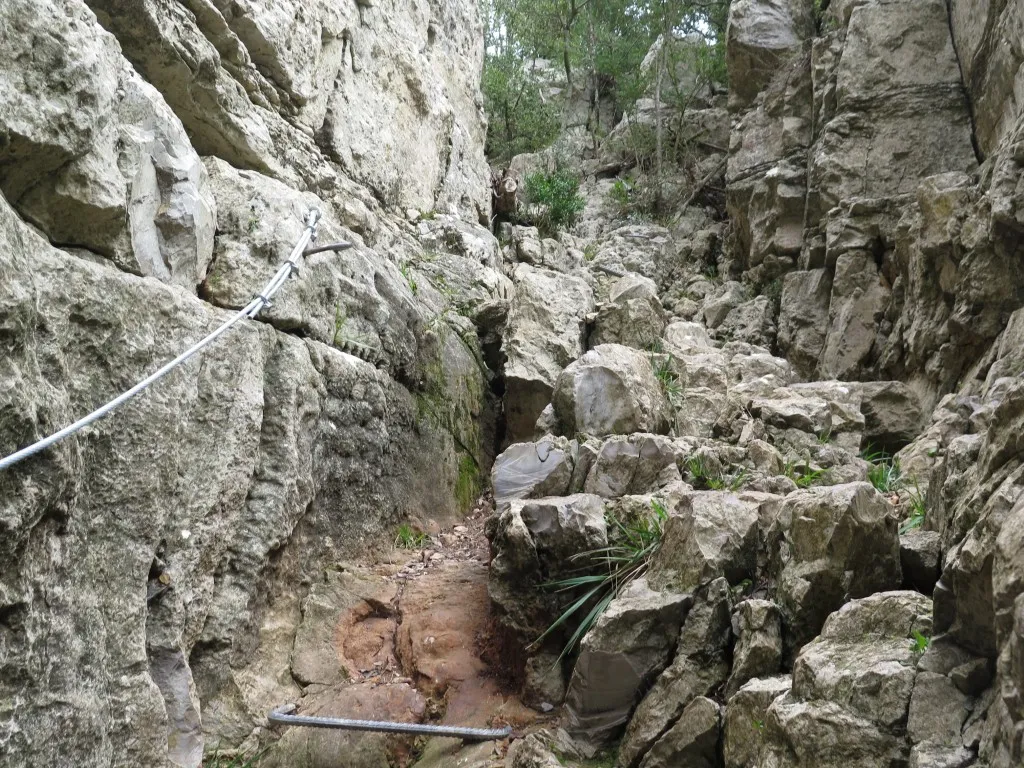
The route under the arch is equipped with handholds and steps anchored in the rock. Following the route we climb up a narrow, steep ravine under the arch, out of the valley and on to the Coutach plateau, but it’s not difficult or especially scary.
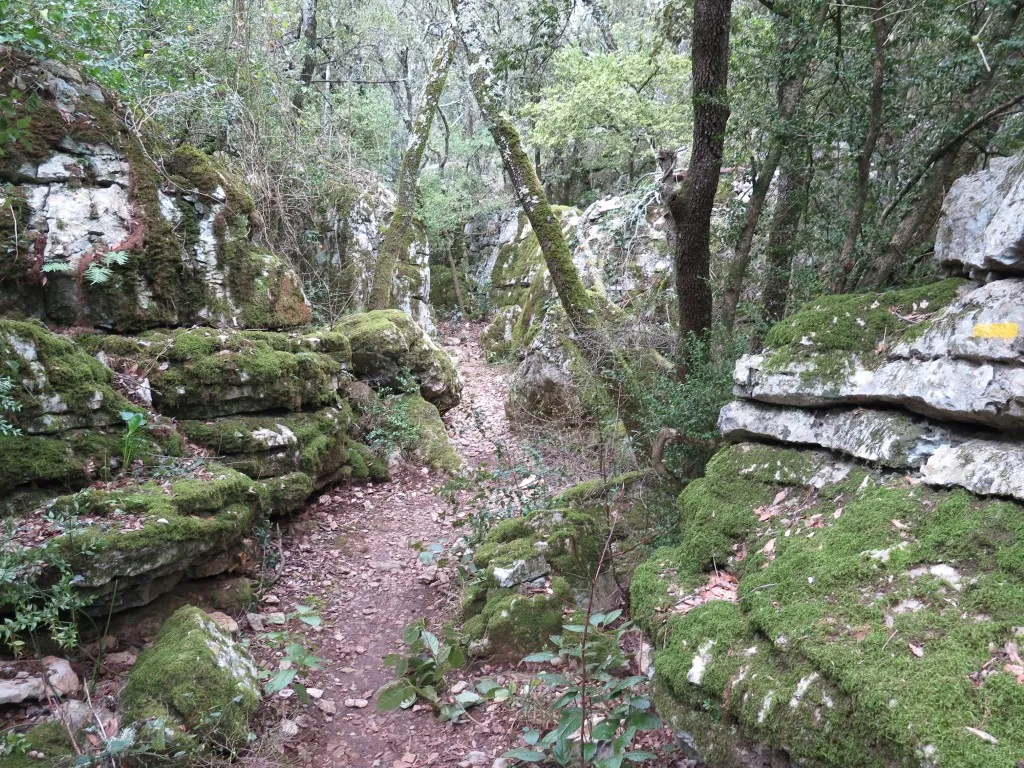
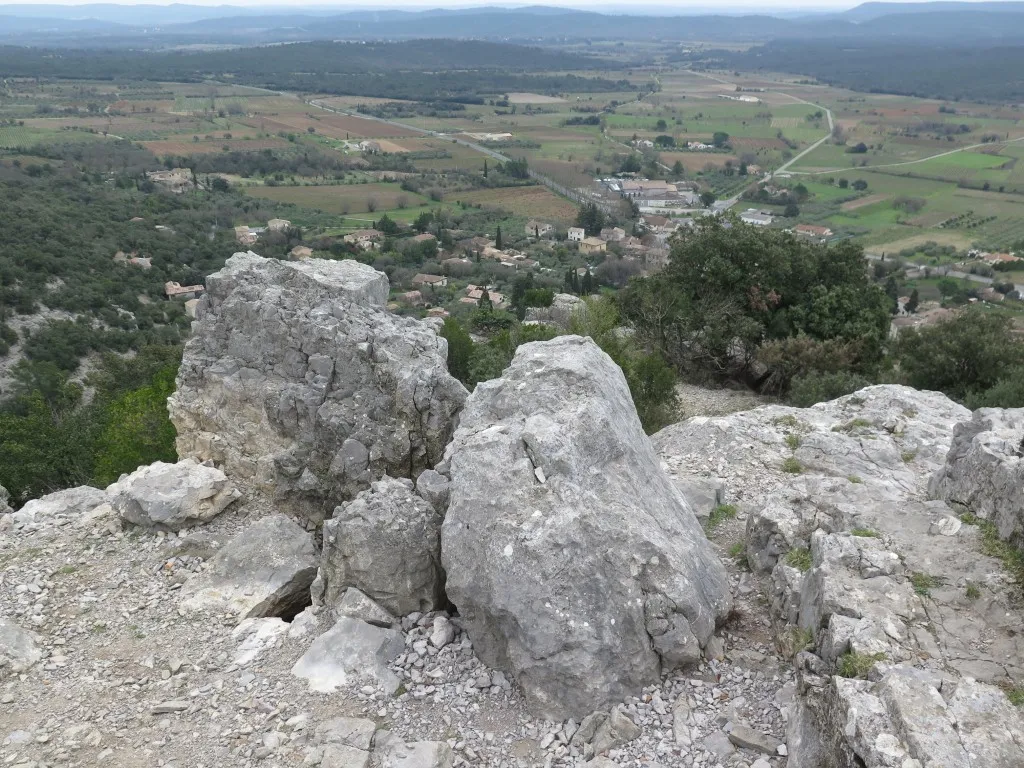
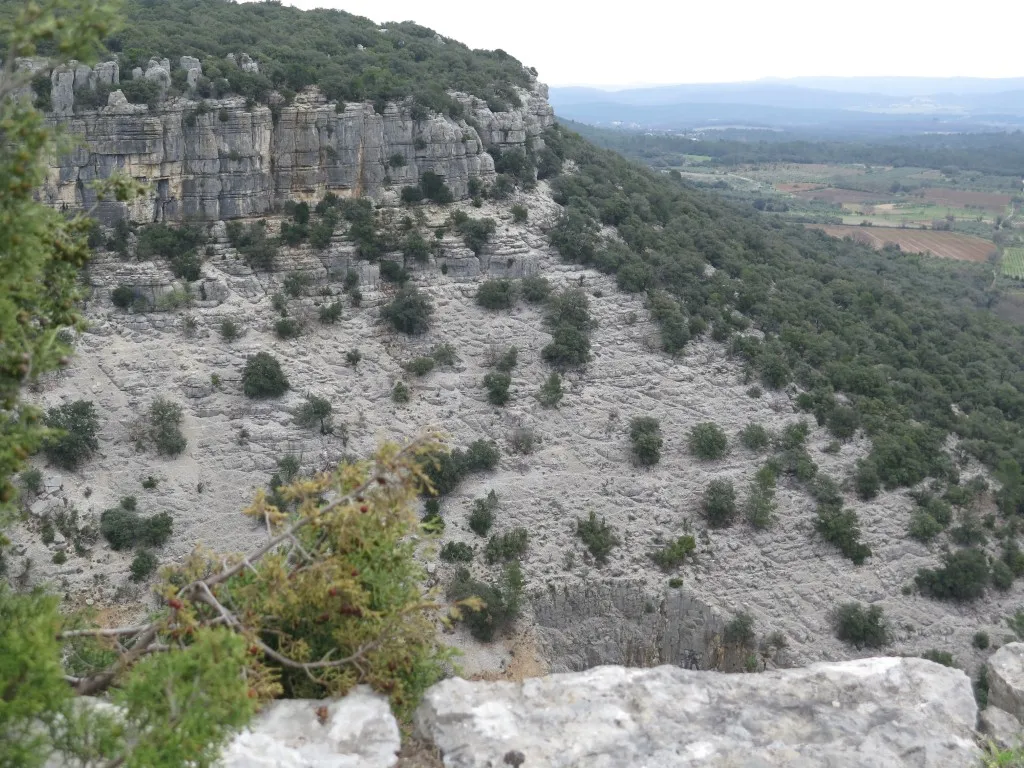
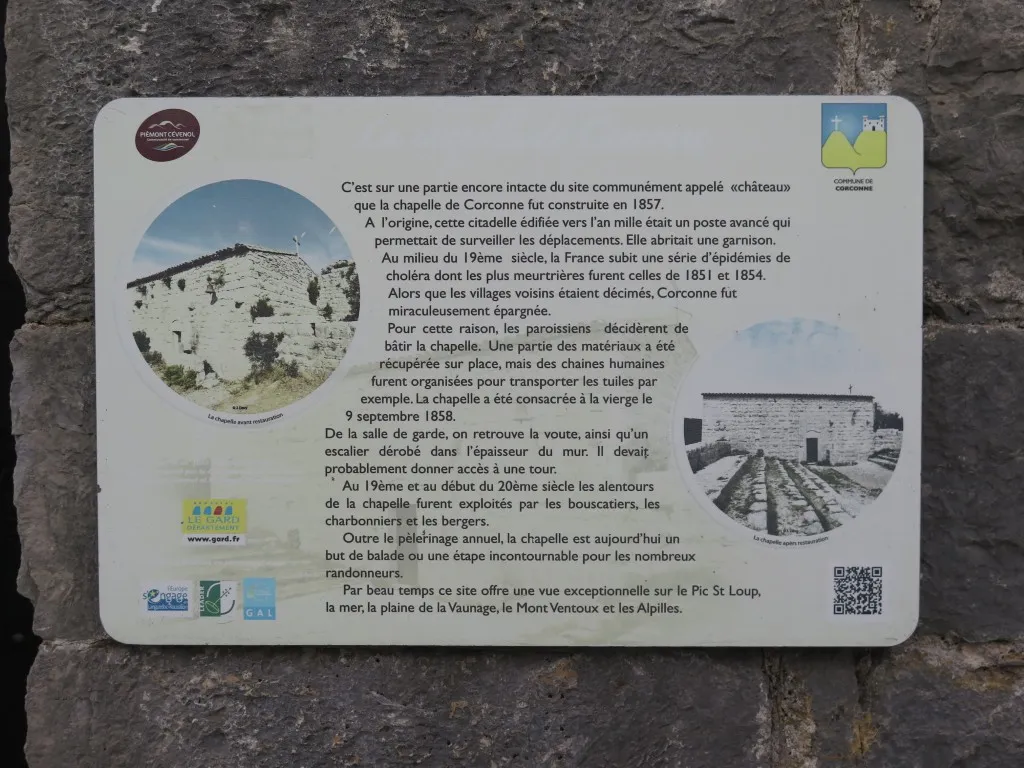
The “pont du hasard” is the first point of interest on this circuit. The second is the view from the castle/chapel on a promontory overlooking Corconne from a height of around 135 m. A third point of interest is the chaotic rockfield between km 2.5 and km 3.0 on the circuit.
Then, in the undergrowth or on the DFCI, the path becomes easy and somewhat boring until around km 5 where there are northside towards the southern foothills of the Cévennes and the town of Saint-Hippolyte-du-Fort. And finally, around km 9, along the downhill route off the plateau there are fine views to the south and to the Corconne vineyards.
